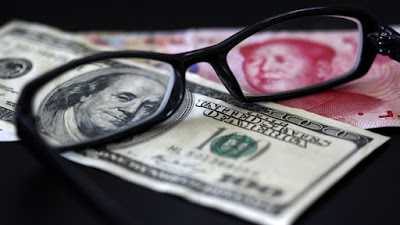
There are two main developments.Â
First, the high degree of uncertainty expressed in the FOMC minutes and the repeated references to the strong dollar spurred a wave of dollar selling. The dollar retreated in Asia, but European participants saw the pullback as a new buying opportunity.Â
Second, Chinese officials have continued to squeeze liquidity in the offshore yuan market (CNH), and some reports suggest that state-owned enterprises were encouraged to sell foreign exchange holdings. In addition to more formal and informal capital controls, Chinese officials triggered a short squeeze that has been painful enough to likely deter aggressive sales in the near-term. In these two days, as the overnight deposit rate for yuan in Hong Kong rose to 80% and the three-month deposit rate jumped 100 bp, the CNH has rallied nearly 1.9% and on the onshore yuan (CNY) has gained 1.1%.Â
Longer-term outlooks will not change due to the short squeeze. More powerful fundamental drivers include the broader trajectory of the dollar and interest rate differentials. Still, capital controls and the willingness of officials to facilitate such a powerful squeeze demonstrates their resolve and ability to manage the challenges.Â
Separately, there was more confirmation of the stabilization of the Chinese economy. The Caixin services PMI rose to 53.4 from 53. This combined with the improvement reported earlier in the manufacturing PMI, the composite rose to 53.5 (from 52.9), which is a new record for the two-year-old time series. Â
The key takeaway from the FOMC minutes is that there is much uncertainty surrounding the size, timing, and composition of the new administration’s fiscal efforts. This told investors that officials are not particularly confident in their forecasts and projections, which Yellen had admitted at the post-FOMC press conference that the steeper rate path reflected very modest adjustments to a few changed forecasts among the participants. Â

